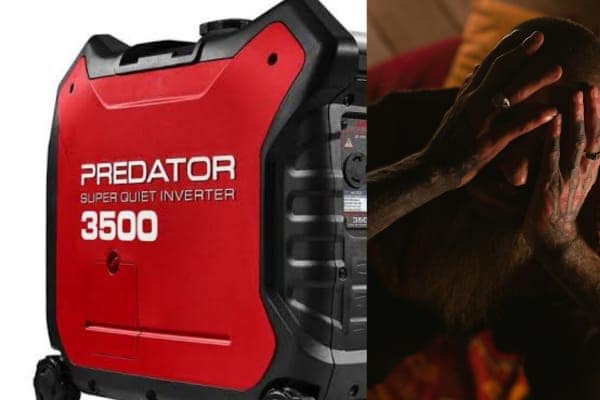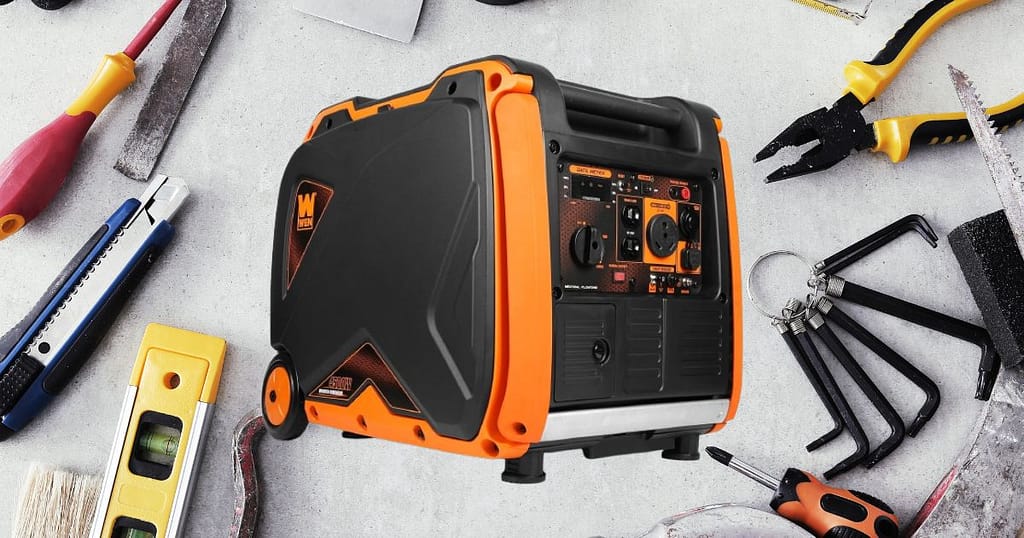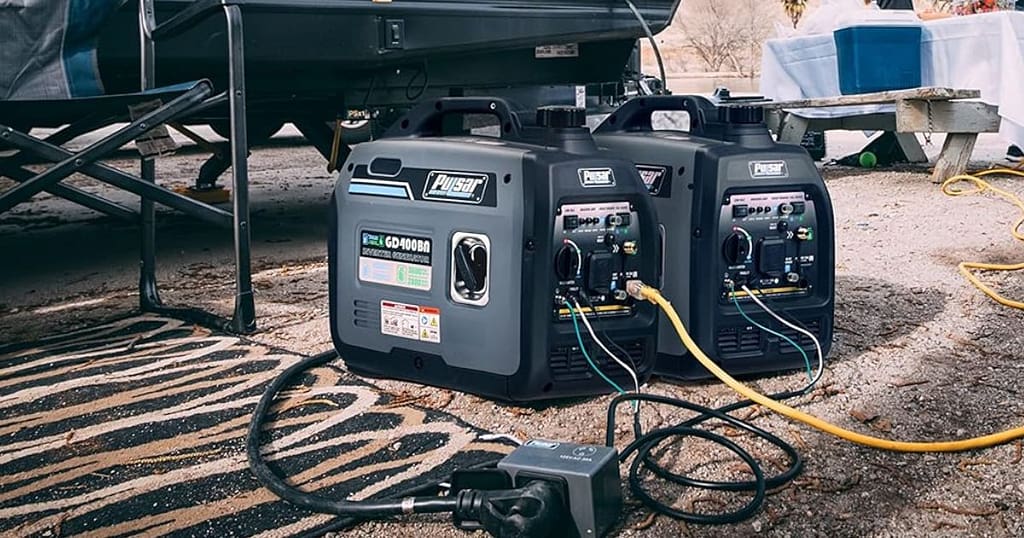
In a world where dependable power sources are crucial, the Predator 3500 inverter generator has emerged as a steadfast companion for adventurers, homeowners, and outdoor enthusiasts. With its efficient design and impressive features, this generator has won the hearts of many. However, even the most reliable tools can sometimes encounter challenges. In this comprehensive exploration, we delve into the less-traveled path and shed light on some of the unique Predator 3500 inverter generator problems that users might encounter.
What the Uncommon Predator 3500 Inverter Generator Problems
1. The Enigmatic E1 Code:
The Enigmatic E1 Code associated with the Predator 3500 generator is a topic that has garnered relatively little attention, yet it presents a perplexing challenge to users who encounter it. This elusive error code, often coupled with a disconcerting blinking overload light, creates a scenario that can baffle even experienced users. When the E1 code materializes, it serves as a warning sign that the generator is grappling with an overload or a short-circuiting situation within its intricate electrical systems.
Typically, the emergence of the E1 code can be attributed to instances where the generator is subjected to a workload that surpasses its designated capacity. The generator, designed with a specific power output in mind, possesses limits to the amount of electrical load it can handle. Pushing the generator beyond these limits, perhaps due to an array of devices demanding power simultaneously, triggers the safeguarding mechanism in the form of the E1 code.
Understanding the nuances and intricacies of this enigma becomes an invaluable asset for users who rely on the Predator 3500 generator. As they decode the E1 error, users glean insights into its triggers, which can include the cumulative power draw of connected appliances and the sudden surge in demand when power-hungry equipment starts up. Such comprehension empowers users to make informed decisions about the devices they connect, potentially preventing instances of overload and the subsequent appearance of the E1 code.
Furthermore, users who delve into this topic discover the significance of maintaining a balance between the generator’s output capacity and the aggregate power requirements of connected devices. This might involve distributing the power load across different phases or cycles, optimizing the use of the generator’s power without triggering the error. It’s also worth noting that factors such as the ambient temperature and the condition of the generator’s components can contribute to the likelihood of the E1 code manifesting.
2. The Mysterious Oil Leak:
This issue, although not very common, has caught the attention of a select group of users. The Predator 3500 generator is well-known for its durability and reliability, but this oil leakage concern has raised some valid questions about its long-term performance and the environment.
The Phantasmal Oil Leakage is a bit of a head-scratcher for everyone involved. This generator is usually tough and well-designed, but sometimes, it seems to have a strange habit of leaking oil. The fact that it happens sporadically adds to the mystery. People wonder why a well-respected machine like this would behave unexpectedly.
To understand why this enigmatic oil leakage happens, we need to consider a few factors. After looking at reported cases, we see a few possibilities. One is that there might be issues with how the generator’s parts are sealed, perhaps due to manufacturing quirks or assembly errors. Another factor is overfilling the oil reservoir. The generator is designed with precision, so it’s essential to measure the oil level accurately. Even a tiny bit too much oil can lead to this elusive oil leak.
The Phantasmal Oil Leakage isn’t just an inconvenience. It raises concerns about the generator’s long-term performance and efficiency. This sporadic issue might signal a broader problem that could affect how well it works over time. And let’s not forget about the potential environmental impact. Accidental oil spills can harm the ecosystem, so it’s crucial to address this issue promptly.
So, what should Predator 3500 owners do? Most people still enjoy the reliability of their generators, but the Phantasmal Oil Leakage issue needs attention. Taking proactive steps like regular maintenance checks, making sure not to overfill the oil, and keeping an eye on things can help reduce the chances of this rare problem happening. As the community of users shares their experiences and potential solutions, we’re getting closer to solving the mystery of the Phantasmal Oil Leakage. This ensures that the Predator 3500 will continue to uphold its excellent reputation for years to come.
3. The Whispering Whir:
Imagine a world where quiet machines reign supreme, and the Predator 3500 inverter generator stands amidst them, a true marvel of hushed efficiency. This incredible machine has won the hearts of users worldwide with its nearly silent operation, offering a peaceful oasis in a noisy world of machinery. But within this mechanical wonder lies a curious phenomenon known as “The Whispering Whir.”
Encountering the Whispering Whir is like stumbling upon a hidden gem on a well-trodden path—a surprising and almost mystical experience that breaks the usual rhythm. For those used to the generator’s quiet hum, this sporadic sound can be quite perplexing, defying its reputation for silence.
Let’s dive into the intriguing world of this mysterious sound. Is it possible that the generator’s exhaust, responsible for releasing combustion byproducts, occasionally produces resonances that give rise to the Whispering Whir? Or perhaps, hidden within the engine’s intricate chambers, certain components engage in a harmonious dance, creating fleeting moments of sound amidst the prevailing quiet.
Consider the role of internal vibrations in this puzzle. Could the generator’s finely tuned balance occasionally experience minor fluctuations, resulting in vibrations that become audible? Just as even the most graceful dancers stumble from time to time, this mechanical masterpiece may have its occasional missteps.
Maintaining the tranquility associated with the Predator 3500 inverter generator takes on new dimensions when we think about the Whispering Whir. It becomes a quest to not only preserve quiet but also to decode the language of this occasional auditory companion. Is it possible that the generator, in its mechanical eloquence, is whispering secrets to those who listen closely? Each occurrence of the Whispering Whir reminds us that in the world of machines, mystery and wonder endure, eluding even the most meticulous blueprints.
As users and enthusiasts gather around this generator, they are united by a shared curiosity—an unspoken agreement to explore its unique personality. The Whispering Whir, far from being a flaw, becomes a bridge between human fascination with technology and the wonders beneath the surface. It serves as a reminder that within the realm of engines and circuits, there remains a touch of unpredictability and artistry.
Ultimately, the quest to understand the Whispering Whir becomes a collaborative journey between humans and machines, highlighting the interplay between engineering precision and enchanting mysteries. Just as a whisper can convey deep emotions beyond words, the Whispering Whir invites us to embrace the uncharted territories of the mechanical world, where every sound tells a story waiting to be deciphered.
4. Navigating Startup Challenges with the Predator 3500 Generator:
Imagine a scenario where you’re all set to power up your equipment smoothly with the Predator 3500 generator. Instead, you find yourself facing unexpected hurdles that call for your attention and creative problem-solving skills.
These startup issues, though mysterious, can be described in simpler terms. Think of it as the generator having a bit of trouble getting started, almost like it’s wrestling with an invisible opponent that won’t let it ignite. It might start and stop repeatedly, like a hesitant dancer taking uncertain steps, adding an element of unpredictability to the situation. Sometimes, it might even refuse to cooperate, leaving you wondering whether it’s a machine or a moody character with a mind of its own.
As users tackle these puzzling challenges, they embark on an intellectual journey to understand why these things happen. Imagine looking into the generator’s inner workings, where the harmony between fuel, spark, and temperature holds the key to reliable operation. Think of fuel issues as a bit of a mystery, involving the quality, composition, and flow rate of the fuel – like deciphering a secret code that determines if the generator will spring to life or stay dormant.
Now, picture spark plug problems as a tiny drama within the generator’s core. Imagine those little sparks that ignite the fuel-air mixture, like performers in a carefully choreographed show. A faulty spark plug would be like a performer going off-script and causing chaos.
To add to the complexity, think of how temperature changes can affect the startup process. Imagine the generator trying to adapt to shifts in temperature, almost like it has a sensitivity to its environment. This makes it challenging to predict how it will behave.
But fear not! With knowledge comes empowerment. Think of users armed with insights into these startup challenges, confidently addressing the issues that come their way. Like explorers on a quest, they diagnose fuel problems, replace spark plugs, and adjust their startup routines to cope with changing temperatures. Every successful startup becomes a moment of triumph, as they unravel the generator’s mysterious personality bit by bit.
5. The Unforeseen Electronics Gremlin:
When we talk about power generators, we usually think about them as reliable sources of clean and steady electricity. But there’s something strange that can happen, and it’s called the “Mysterious Electronics Glitch.” This term describes a rare and interesting situation where a generator, known for its consistent power, suddenly starts causing problems for delicate electronic devices.
This glitch can be really puzzling because generators are supposed to produce a steady stream of electricity that meets all the standards. So, when electronics start acting up, it adds a layer of complexity that needs some serious investigating. People who face this problem find themselves in a tricky situation. They rely on their dependable generator, but now it’s become a source of uncertainty.
At the core of this mystery is something called “power quality.” Generators aren’t just supposed to make power; they also need to make sure that power is good enough for modern electronics. Things like voltage changes, weird electrical patterns, and shifts in frequency might not bother your average home appliance, but they can really mess up electronic gadgets that need precise conditions to work.
One of the big players in this drama is “voltage regulation.” Generators use systems to control the voltage and keep it steady, no matter how much stuff you’re using. Any hiccup in this process can cause problems, especially for electronic devices that need a specific voltage range to work correctly. The “Mysterious Electronics Glitch” happens when the generator’s voltage control has a momentary hiccup, leading to voltage spikes or drops that mess with the delicate balance in your electronic gadgets.
Another part of the puzzle is compatibility. Modern electronics and old-school generators have to get along, and sometimes that’s easier said than done. While generators have come a long way to meet different energy needs, they might not always match perfectly with the complicated power needs of advanced electronics. Fancy microprocessors, sensitive sensors, and intricate circuits in electronic devices can act in weird ways when the power isn’t perfect.
Solving the “Mysterious Electronics Glitch” needs teamwork. Engineers who know about power generation and electronics have to work together to figure out what’s going wrong. This might mean improving how generators control voltage to give a more stable output. It could also involve educating people about using things like surge protectors, voltage stabilizers, and uninterrupted power supplies to shield their sensitive devices from these power-ups and downs.
In Summary, the Predator 3500 Inverter Generator
The Predator 3500 inverter generator is undoubtedly a trustworthy and effective power companion for a wide range of situations. Yet, just like any tool, it can sometimes have a few quirks. By recognizing and dealing with these rare challenges, users can keep enjoying the many advantages of the Predator 3500 while also being ready to tackle any unexpected issues. Remember, it’s by understanding the unusual that we strengthen our understanding of the everyday.




